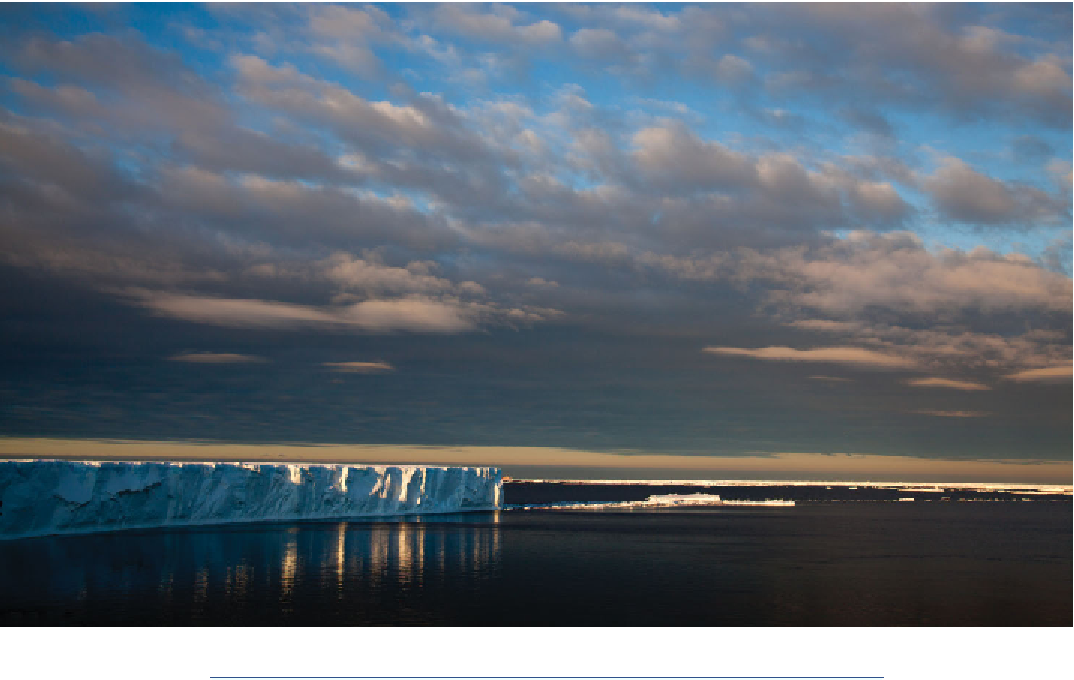Geoscience Reference
In-Depth Information
Figure 5.12
In the coastal polynya off the Ekström Ice Shelf. (Credit: Frank Rödel, AWI)
cant local heat
loss again and a stimulation of ice growth. This diverging sea ice motion occurs
in the vicinity of the continent where winds blowing offshore drive the ice away
from the coast and generate open water called coastal polynyas. In these coastal
polynyas open water occurs under very cold conditions, which are enhanced by
the cold katabatic winds from the interior, and sea ice forms continuously here in
what are considered the Antarctic
Open water can form within the sea ice area allowing signi
. However, the formation of leads
in the sea ice due to wind and current divergences further away from the coast
contribute signi
'
sea ice factories
'
cantly as well. A result of the intensive sea ice formation is
the enhanced release of salt, which increases the salinity and density of the water
in the polynyas.
Under normal conditions sea ice formation increases salinity, enhancing the
water density, which in turn stimulates convection. If convection becomes intensive
enough it can reach down into the levels of the Circumpolar Deep Water and initiate
vertical heat transport up to the ice where it begins melting. Melting provides fresh
water which in turn stabilises the water column and suppresses convection until

Search WWH ::

Custom Search